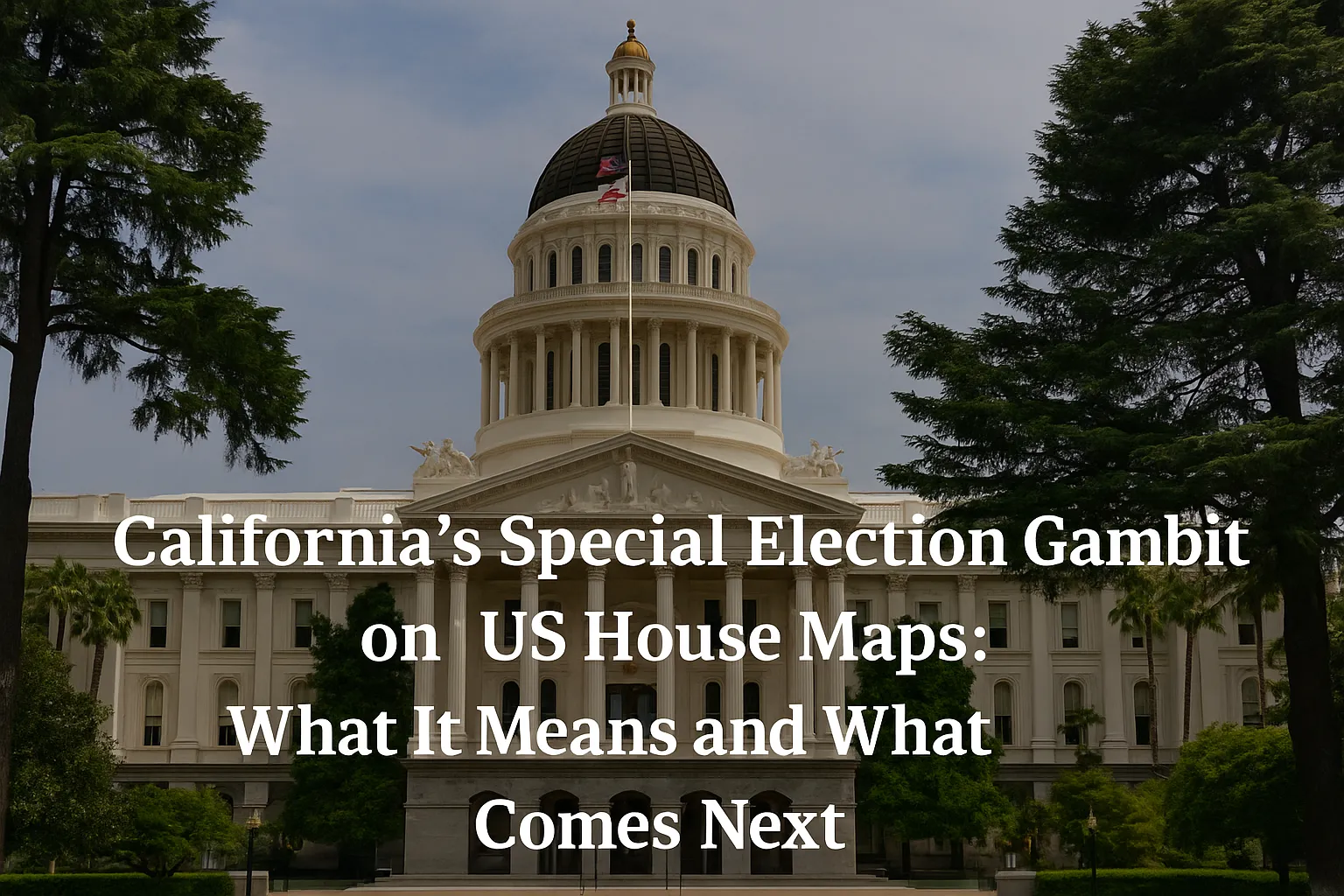California’s Special Election Gambit on US House Maps What It Means and What Comes Next
California governor Gavin Newsom says he will ask voters to approve a new congressional map via a special statewide vote— a direct response to Texas’s plan for a mid‑cycle redraw that could net Republicans extra House seats. Below, we break down how such a move could work, where the legal landmines sit, and why the timing matters for 2026.
What Happened
- The announcement: Newsom proposed putting a new US House map to California voters in a special election.
- The rationale: Supporters frame it as a temporary, voter‑approved counterweight to mid‑decade changes elsewhere.
- The politics: The plan is already a proxy fight over gerrymandering standards and federal power in elections.
How a “Special Election” Map Could Work
California normally uses an independent citizens’ commission once per decade. A special election route would require enabling legislation (and ballot language) to authorize a one‑off congressional map outside the usual cycle, specify who draws it (commission, courts, or a time‑boxed expert panel), and define when it takes effect (e.g., for the 2026 cycle).
| Step | What It Involves | Decision Point |
|---|---|---|
| Legislative path | Pass a bill placing the map question on the ballot | Simple majority + governor’s signature |
| Map creation | Commission or court‑appointed experts draw draft lines with public comment | Criteria: equal pop, Voting Rights Act, contiguity, communities of interest |
| Ballot approval | Statewide vote on whether to adopt the map | 50%+ support (unless the bill sets a higher bar) |
| Implementation | Update precincts, candidate filing windows, and voter info | County clerks, SoS, courts if challenged |
Key Legal Questions
- Mid‑cycle maps: Courts tolerate them for genuine compliance needs; purely partisan motives invite challenges.
- VRA compliance: Any redesign must safeguard minority opportunity districts and avoid dilution claims.
- Process legitimacy: Using the commission versus a one‑off panel will shape judicial scrutiny and public trust.
Why Now — and Why It’s National
The House majority often turns on single‑digit seat swings. If Texas locks in additional GOP districts mid‑cycle, Democrats argue that blue states should not “unilaterally disarm.” Opponents warn of an arms race that would normalize tactical map changes and erode the case for neutral rules nationwide.
What to Watch Next
- Ballot language: Does the bill cap the map’s lifespan (e.g., expires at the 2030 cycle) to emphasize it’s temporary?
- Map criteria: Will the text enshrine compactness, community continuity, and competitiveness?
- Lawsuits: Expect immediate filings over process and effects; timelines will determine if the map can be used in 2026.
- Operational crunch: County election offices need months to re‑precinct, test systems, and mail voter guides.
- Spillover: Other states may float copycat measures or, conversely, codify bans on mid‑cycle changes.
However this plays out, the debate spotlights a simple truth: stable, trusted rules—transparent line‑drawing, clear criteria, real public input—are the only lasting antidote to map wars. The rest is a cycle of escalation.

